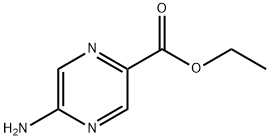what foods require chemical reactions?
what foods require chemical reactions?
Related Products More >
-
- 108-80-5
- USD 50.0000
- 50kg
-
- 108-78-1
- USD 4.5000
- 25kg
-
- 4559-86-8
- USD 750.0000
- 170kg
-
- 77182-82-2
- equest For Quotation
-
- 70131-50-9
- equest For Quotation



 沪ICP备2021018848号-5
沪ICP备2021018848号-5

Baking (e.g., bread, cakes, cookies) – Baking requires chemical reactions like leavening, where substances like baking soda (sodium bicarbonate) or baking powder release carbon dioxide gas when heated, causing the dough or batter to rise.
Fermentation (e.g., yogurt, cheese, bread, alcohol) – Fermentation is a metabolic process in which microorganisms (bacteria, yeast, or molds) break down sugars into acids, alcohol, or gases. For example, in yogurt, lactic acid bacteria ferment lactose (milk sugar) into lactic acid.
Maillard Reaction (e.g., roasted meat, toasted bread, coffee) – This is a complex chemical reaction between amino acids (from proteins) and reducing sugars, contributing to the browning and flavor development during cooking.
Caramelization (e.g., caramel, roasted vegetables) – This reaction occurs when sugar is heated to a high temperature, causing it to break down and form new compounds, giving the sugar a caramelized color and flavor.
Pickling (e.g., pickled cucumbers, sauerkraut) – Pickling involves chemical reactions where acids (like vinegar or lactic acid from fermentation) preserve the food by lowering the pH, preventing spoilage, and often adding unique flavors.
Cooking Eggs (e.g., boiled, scrambled, fried eggs) – The heat causes protein denaturation in egg whites and yolks, changing their structure and turning them from liquid to solid.
Jellies and Jam (e.g., fruit jams) – The gelation process, where pectin (a natural polysaccharide) in fruit reacts with sugar and acid to form a gel-like consistency, is essential for making jams and jellies.
Curing (e.g., cured meats, smoked fish) – The curing process involves chemical reactions where salt, sugar, and nitrates interact with the proteins in meat, inhibiting bacteria and developing flavor and color.
Milk Coagulation (e.g., cheese) – The process of making cheese involves the addition of enzymes (like rennet) that cause the milk proteins (casein) to coagulate, separating the curds from the whey.
These chemical reactions are vital in food preparation and are responsible for the textures, flavors, and preservation of many common foods.
Baked Goods: The production of bread, pies, and other baked goods involves chemical reactions. For example, the reaction between sodium bicarbonate (baking soda) and lactose (milk) produces carbon dioxide gas, which causes the dough to rise during baking .
Browning Foods: Chemical reactions such as the Maillard reaction are crucial in browning foods. This reaction occurs when amino acids and reducing sugars react under heat, producing melanoidins responsible for the brown color and characteristic flavors of cooked foods
.
Fermented Foods: Fermentation is a chemical process driven by microorganisms like yeast and bacteria. Examples include beer, wine, yogurt, and cheese. These foods undergo biochemical reactions that transform raw ingredients into consumable products
.
Cooked Meats: During high-temperature cooking, sugars in meat react with amino acids through the Maillard reaction, leading to browning, aroma development, and flavor enhancement .
Starch-Based Foods: Foods made from starch, such as potatoes and corn, undergo hydrolysis and other chemical reactions during cooking. For instance, potatoes turn into starch gel when heated, which is a result of complex molecular interactions .
Caramelization: This reaction involves the breakdown of sugars under heat, producing caramel, which adds flavor and color to foods like roasted nuts and desserts .
Enzymatic Reactions: Enzymes play a significant role in food processing. For example, during fruit ripening, enzymes break down starches into simpler sugars, affecting the taste and texture of the fruit .
Preservation and Storage: Chemical reactions are also involved in preserving food quality. For instance, antioxidants prevent oxidation, which can lead to spoilage or nutrient degradation
.
Fermentation: This ancient process involves the conversion of sugars into alcohol or acids by microorganisms like yeast or bacteria. Examples include yogurt, cheese, bread, beer, and sauerkraut.
Maillard Reaction: Occurs when amino acids and sugars are heated together, leading to browning and the development of complex flavors in foods like roasted coffee, baked bread, and seared meats.
Enzymatic Browning: An example is when cut apples turn brown due to the enzyme polyphenol oxidase reacting with oxygen. This can be slowed by acidic conditions or antioxidants.
Caramelization: The heating of sugars until they break down and re-form into new compounds, resulting in a characteristic golden color and sweet, nutty flavor in caramel.
Protein Denaturation: Heat causes proteins to unfold, changing the texture of foods like eggs, which solidify when cooked.
Saponification: In the making of soap, but also relevant in food like homemade mayonnaise, where an emulsion forms through the reaction of oil, water, and an emulsifier like egg yolk.
Hydrolysis: Breakdown of complex molecules like starches into simpler sugars, as when cooking rice or pasta, making them more digestible.
Ripening: A natural process involving the production of ethylene gas, which triggers the softening of fruits like bananas and the development of their characteristic flavors.
Acid-base reactions: Used in pickling to preserve vegetables, where acids like vinegar react with the food's components, creating a hostile environment for bacteria.
Gelification: The transformation of liquid into a semi-solid state, often achieved with gelatin or agar, which involves the interaction of proteins or polysaccharides with water.
These chemical reactions not only enhance the taste, texture, and appearance of foods but also play a crucial role in food preservation and safety. Understanding these processes allows chefs and food scientists to create diverse and delicious dishes.